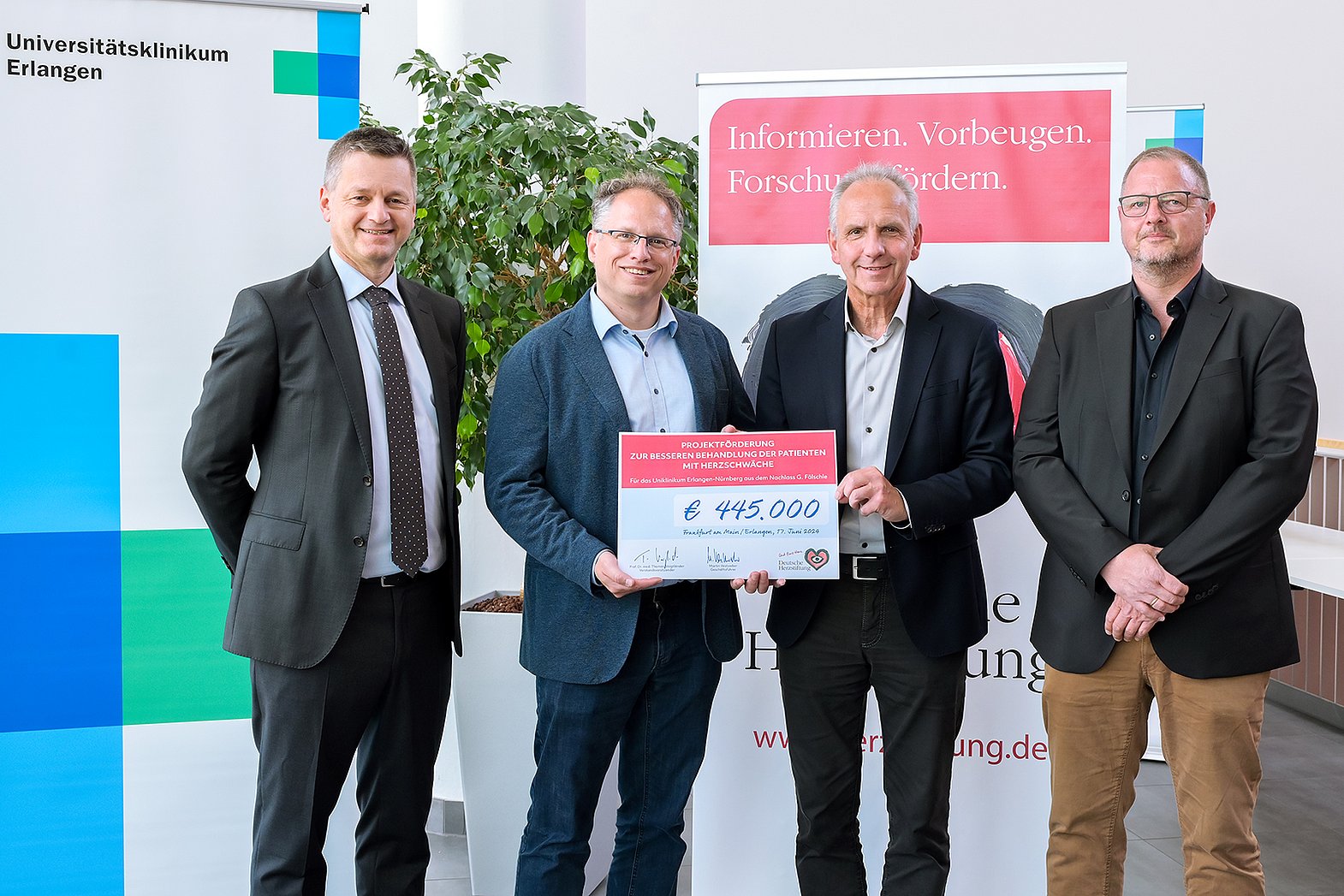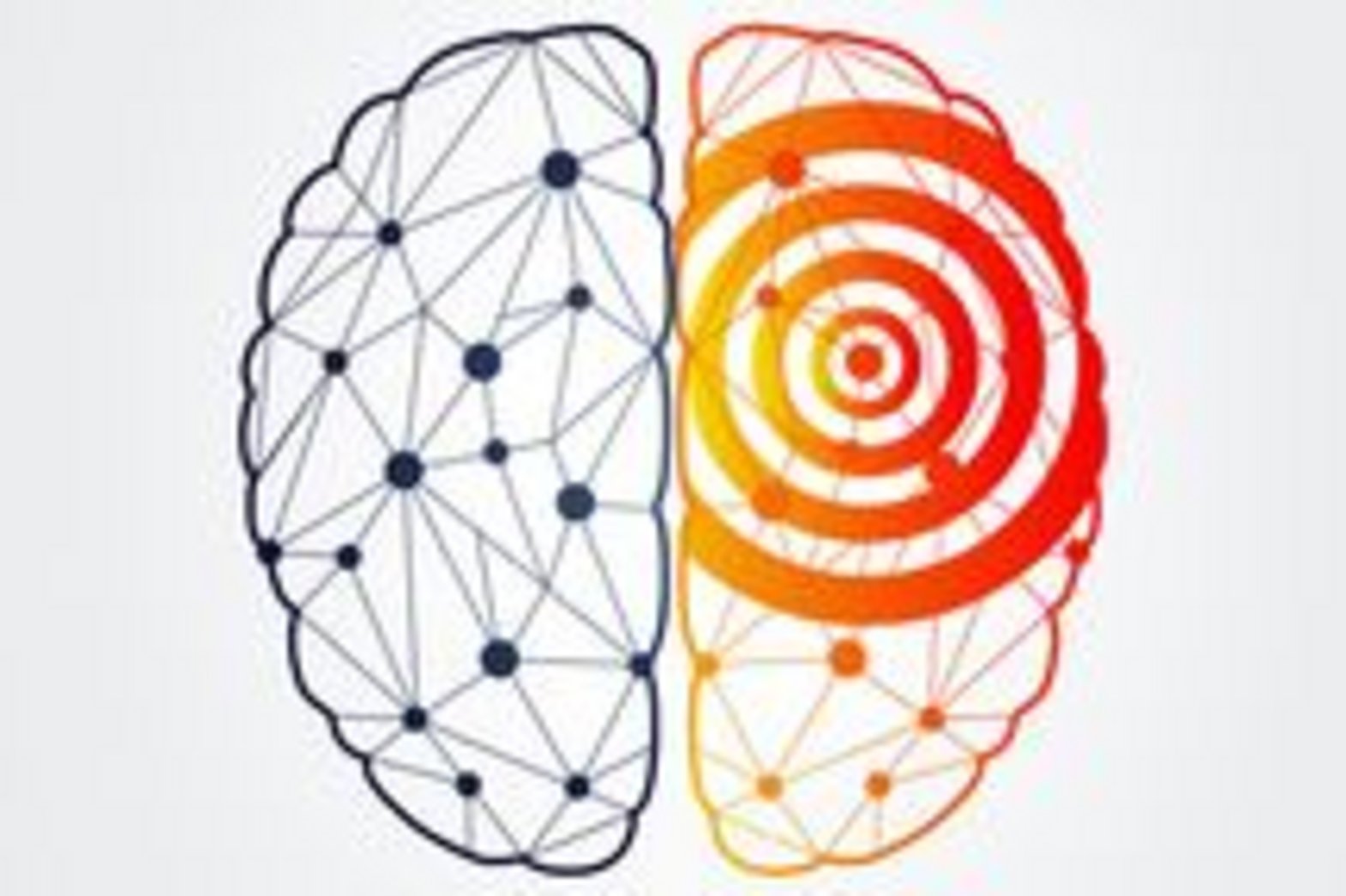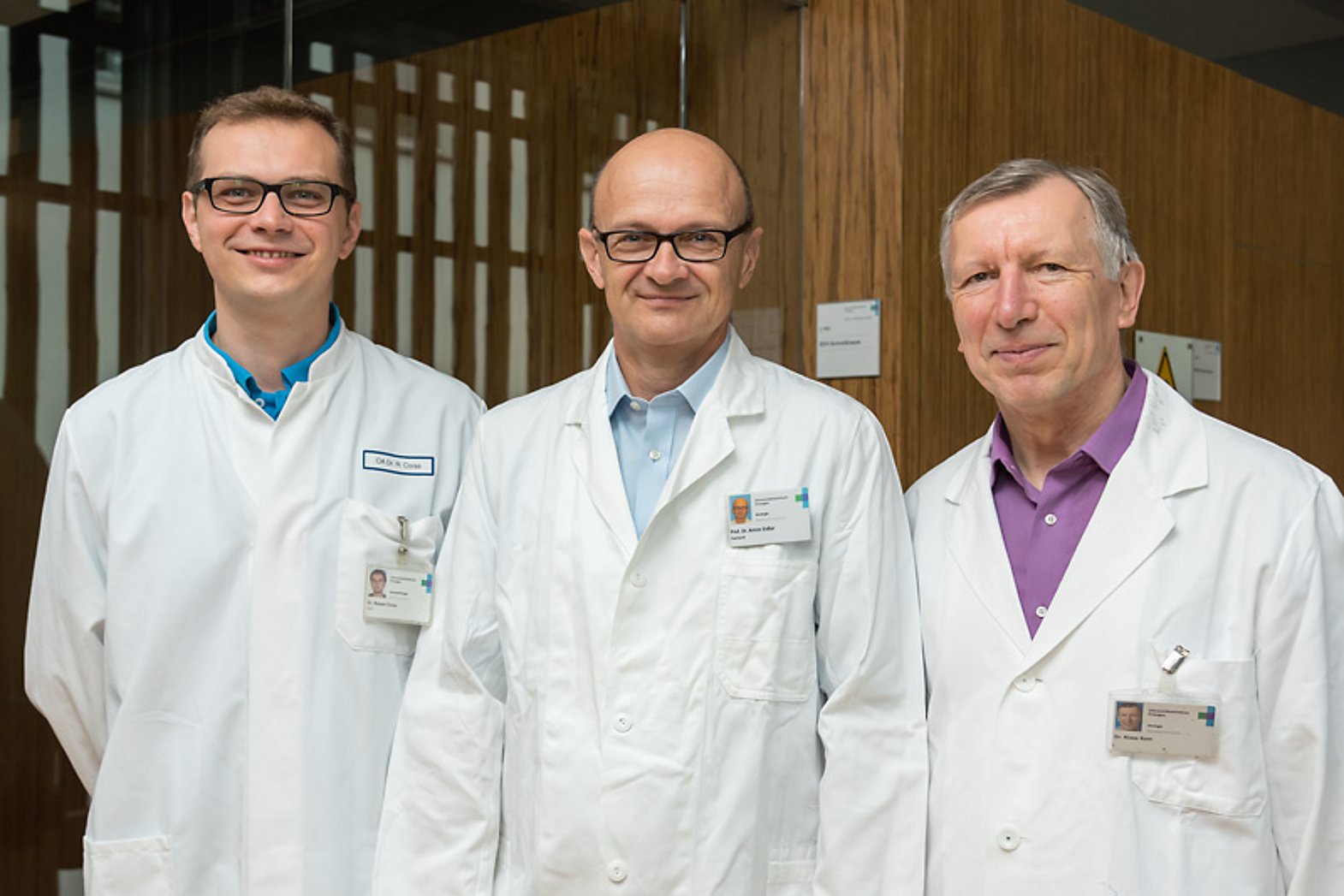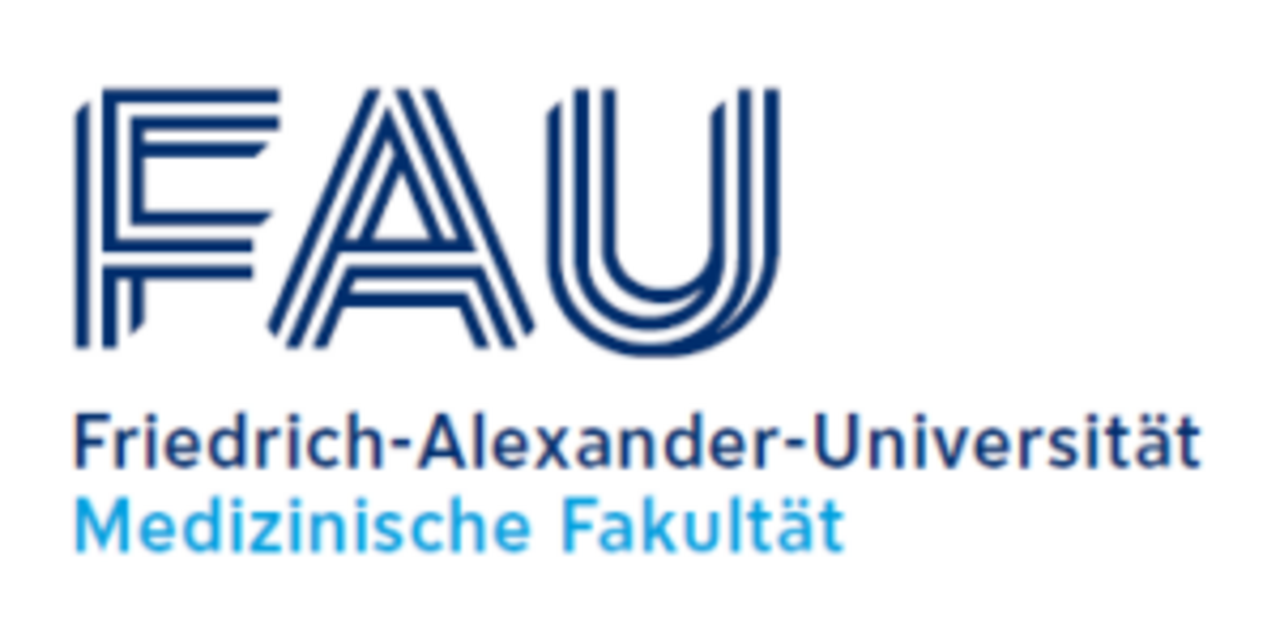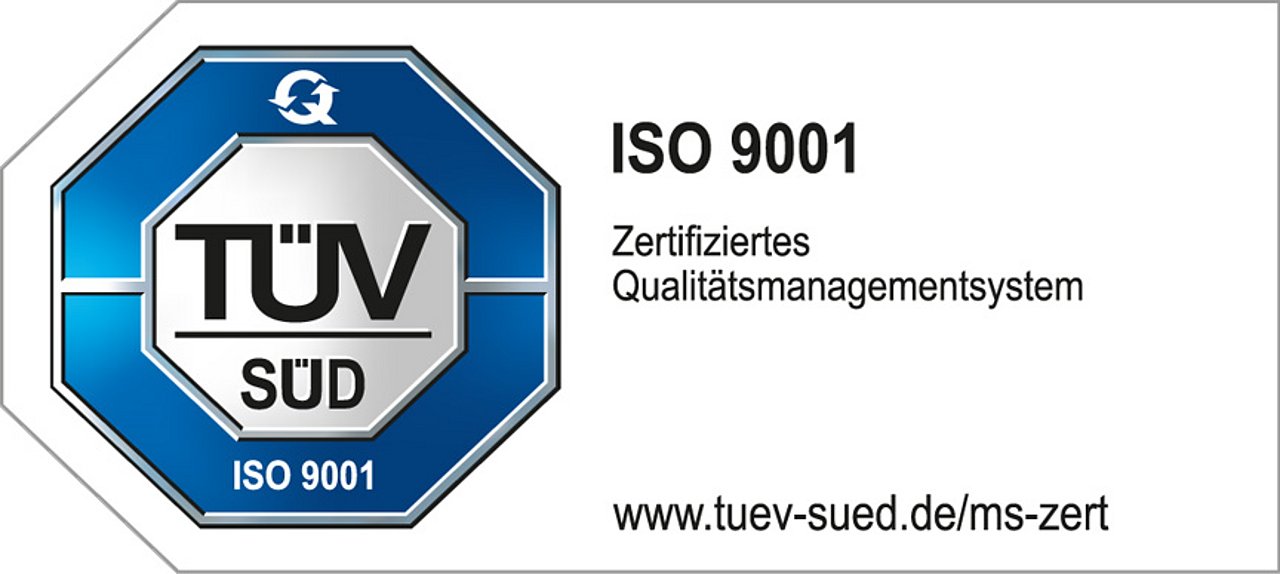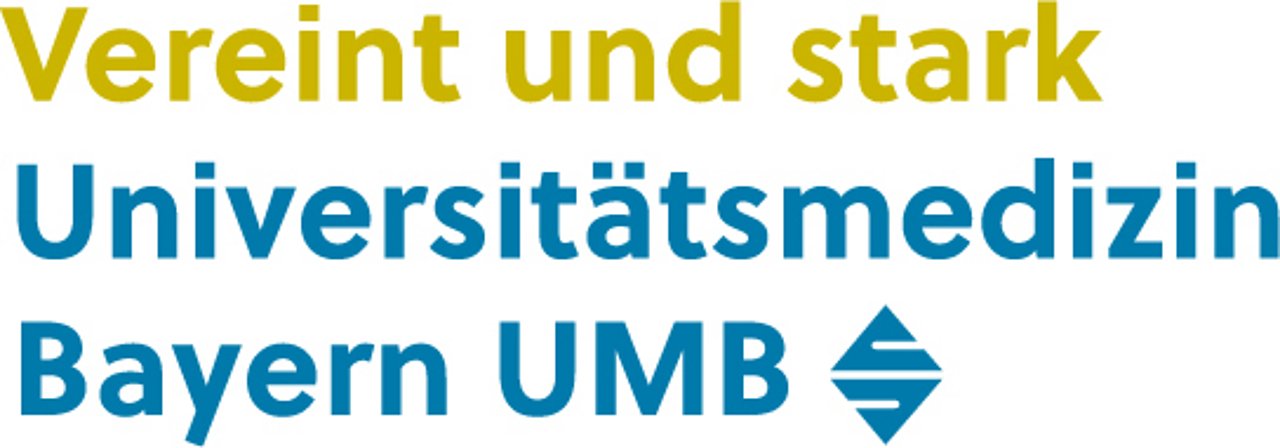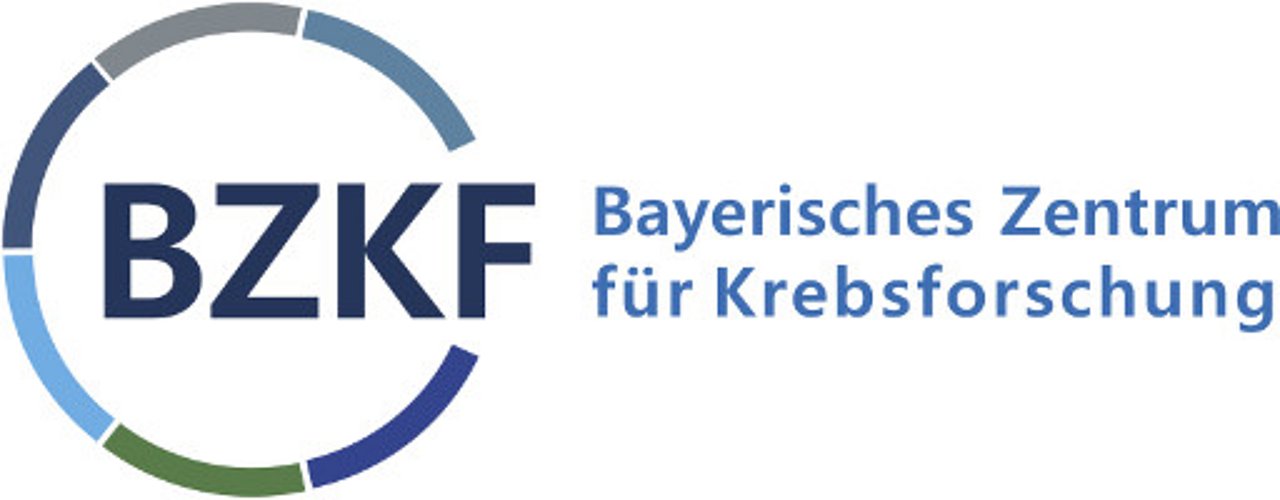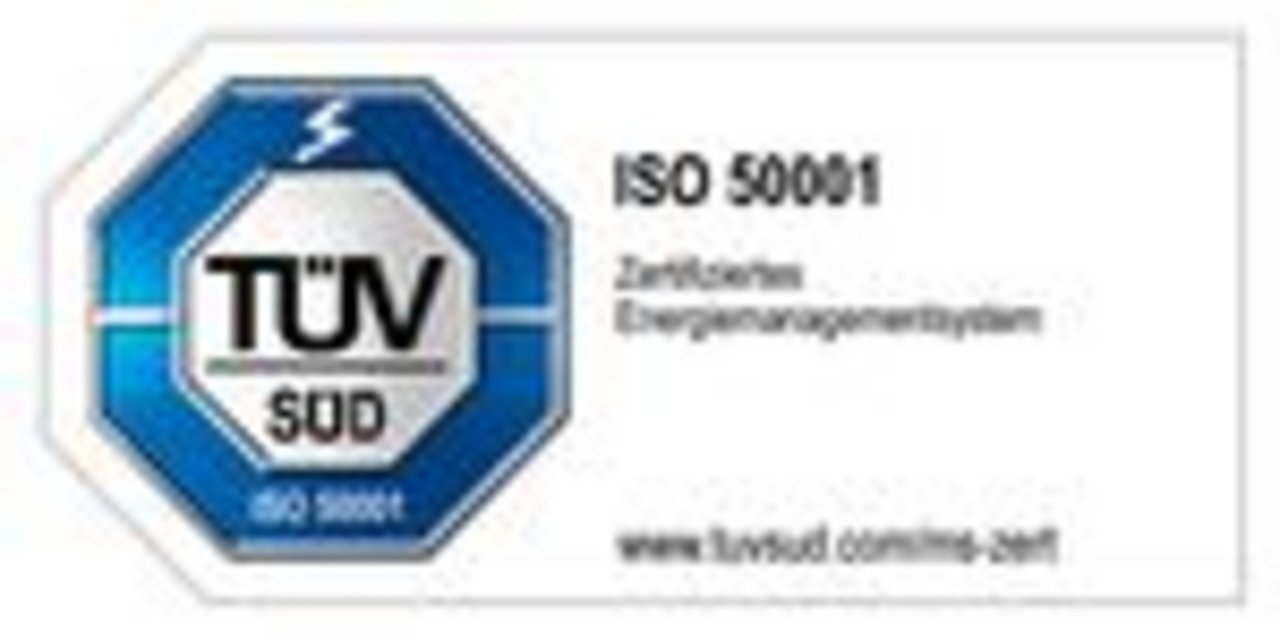Aktuelle Presseinformationen
Hier finden Sie die jeweils aktuellsten Nachrichten aus dem Uniklinikum Erlangen. Eine vollständige Übersicht über alle Meldungen bekommen Sie im jeweiligen Archiv.
Ein Pflaster für das Herz
Nephropathologie erhält Förderung in Höhe von 445.000 Euro von der Deutschen Herzstiftung für die Erforschung des 3-D-Drucks von menschlichem HerzgewebeAnnika Lehner published her scientific results of a collaborative study from the DFG-funded CRC1540 "Exploring Brain Mechanics"
cand. med. Annika Lehner has published the scientific results of her medial doctorate thesis in an open access peer reviewed journal http://doi.org/10.1002/epi4.12963Registration is open for the 14th ILAE Summer School for Neuropathology and Epilepsy Surgery in Erlangen, Germany
14th INES in Erlangen, Germany, September 19-22, 2024PD Dr. Katja Kobow was awarded with a new research grant (2024-2027)
TOPIC: transgenerational effects of early-life exposure to anti-seizure drugsDeep Learning in Neuropathology - 1st AI-based histopathology classifier for FCD is published online
Congratulations to Jörg Vorndran for his recent publication of a new deep learning algorithm classifying various subtypes of Focal Cortical DysplasiaDie Neuropathologie betreut 2 Teilprojekte im neuen SFB 1540 "Exploring Brain Mechanics"
Understanding, engineering and exploiting mechanical properties and signals in brain malformations associated with focal epilepsyDFG-Projektförderung SCHR 562/22-1
Die Deutsche Forschungsgemeinschaft fördert für 3 Jahre ein neues wissenschaftliches Projekt von Prof. Schröder zur Funktionellen Analyse der strategischen Rolle der Ig-Domäne von Filamin C im gesunden und erkrankten Muskelgewebe.Die DFG fördert ein weiteres wissenschaftliches Projekt von Prof. Dr. Rolf Schröder am Neuropathologischen Institut
Die Deutsche Forschungsgemeinschaft fördert für 3 Jahre ein neues Projekt zur Rolle von Plectin in der gesunden und erkrankten HerzmuskulaturOnline Fragestunde zur Klinisch-Pathologischen Konferenz im 9. Semester am 2.2.2022 um 10h c.t.
Live-ZOOM mit Prof. Blümcke und Prof. Schröder zu ihren Fragen über häufige klinisch-neuropathologische KrankheitsbilderNeue DFG-Förderung für Prof. Rolf Schröder am Neuropathologischen Instiutut
Die Deutsche Forschungsgemeinschaft fördert für 3 Jahre wissenschaftliche Untersuchungen zu neuen Therapiestrategien bei Desmin-assoziierten Myopathien und KardiomyopathienDie Else Kröner-Fresenius Stiftung fördert die wissenschaftlichen Arbeiten von PD Dr. Katja Kobow
DNA methylation-based disease classification in focal epilepsiesNeue Therapien für erbliche Muskelerkrankungen
Neue Bessel-Preisträgerin Dr. Ana Ferreiro Sieiro forscht in ErlangenAnfallsfrei durch Epilepsie-Operationen im Gehirn
Forschungsteam des Uni-Klinikums Erlangen, der FAU und der Uni-Klinik Utrecht wertet Europäische Kohorte mit mehr als 9.000 Operationen ausDigitale Lehre für das 9.Semester K-PS9 Q5 (Klinisch-pathologische Fallkonferenz)
Virtuelle Fallvorstellungen für die Vorlesung K-PS9 auf dem Videoportal der FAU (StudON) verfügbarDas Neuropathologische Institut gratuliert Frau Dr. rer. nat. Dr. habil. med. Katja Kobow zur Habilitation
öffentliche Antrittsvorlesung am 30.1.2020 um 10.15h im Ernst-Freiberger Hörsaal des Kopfklinikums zum Thema: Wie Nervenzellen lernen epileptisch zu sein!Neue DFG-Förderung für die Arbeitsgruppe Molekulare Myopathologie im Institut für Neuropathologie
Prof. Harald Herrmann wird mittels modernster biophysikalischen Techniken das Aggregationspotential mutierter Muskel-Strukturproteine in kultivierten Zellsystemen untersuchen10th International Summer School for Neuropathology in Campinas, Brazil
Summer School for Neuropathology and Neuroimaging in Epilepsy is starting soonDas IZKF des Uniklinikums fördert Deep Learning Morphology in der Neuropathologie
Neue IZKF-Förderung im Erstantragstellerprogram für PD Dr. Samir JabariDas neue Ausbildungscurriculum der ILAE für Epileptologie ist da!
ILAE Curriculum 2019„Deep Learning Morphology"
Neue Arbeitsgruppe am InstitutNew research project on "Desmin-related Myopathies" is supported by DFG
Prof. Rolf Schröder receives new DFG funding (SCHR 562/16-1)Bornavirus kann für Menschen tödlich sein
Forschergruppe wies Virus bei Patienten mit Gehirnentzündung nachSortierung nach Einrichtungen
- Uniklinikum
- Allgemeinmedizin
- Anästhesiologie
- Apotheke
- Augenklinik
- CCC Erlangen-EMN
- CCS
- Chirurgie
- Deutsches Zentrum Immuntherapie
- Experimentelle Therapie
- Frauenklinik
- Gefäßchirurgie
- Hautklinik
- Herzchirurgie
- HNO-Klinik
- Humangenetik
- Immunmodulation
- Infektionsbiologie
- Kieferorthopädie
- Kinderchirurgie
- Kinderkardiologie
- Kinderklinik
- Kinderpsychiatrie
- Medizin 1
- Medizin 2
- Medizin 3
- Medizin 4
- Medizin 5
- MIK
- Mikrobiologie
- Mikrobiomik
- MKG-Chirurgie
- Molekulare Immunologie
- Molekulare Neurologie
- Molekulare Pneumologie
- Nephropathologie
- Neurochirurgie
- Neurologie
- Neuropathologie
- Neuroradiologie
- Nuklearmedizin
- Palliativmedizin
- Pathologie
- Plastische/Handchirurgie
- Psychiatrie
- Psychosomatik
- Radiologie
- Stammzellbiologie
- Strahlenklinik
- Thoraxchirurgie
- Transfusionsmedizin
- Unfallchirurgie-Orthopädie
- Urologie
- Virologie
- Zahnerhaltung
- Zahnärztliche Prothetik
- Zentrallabor

